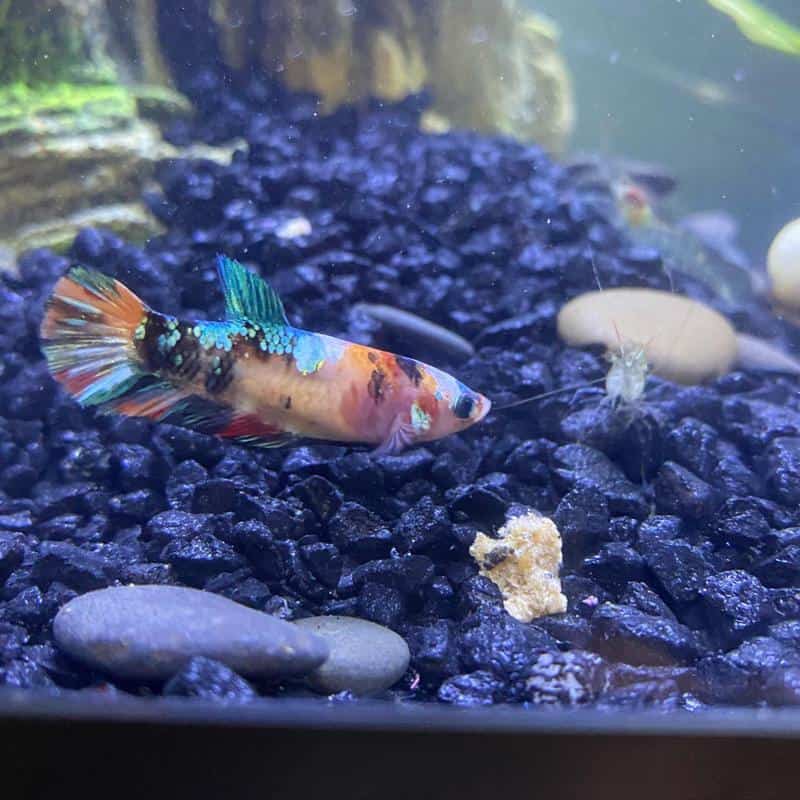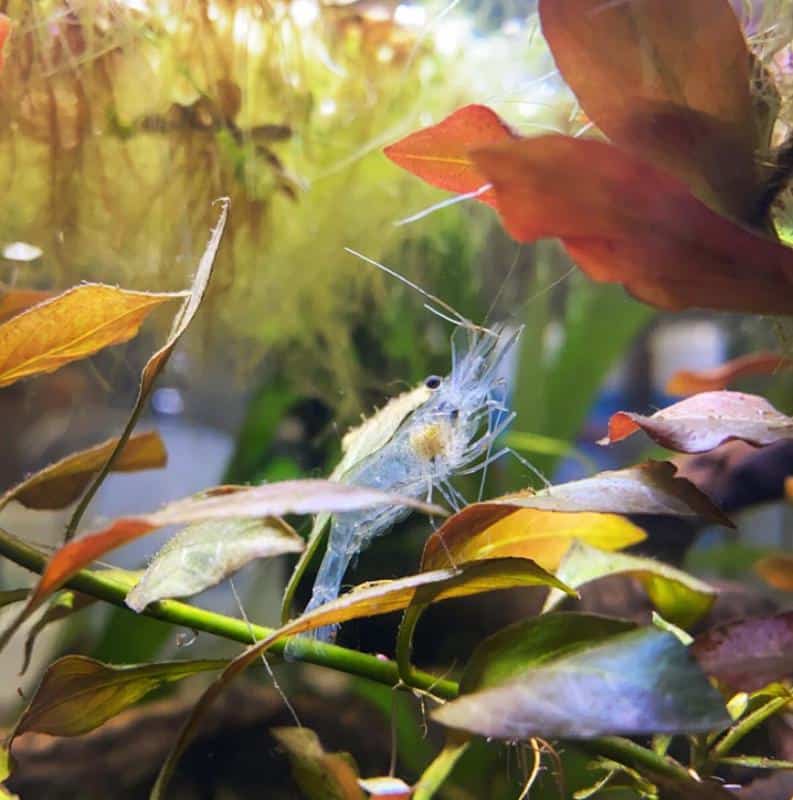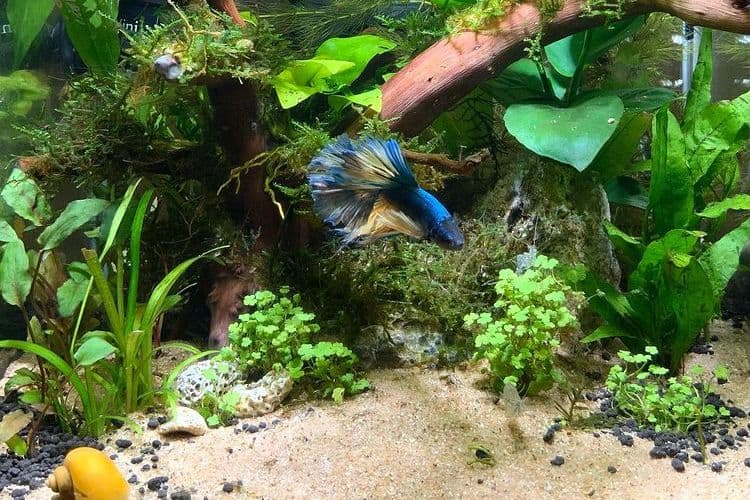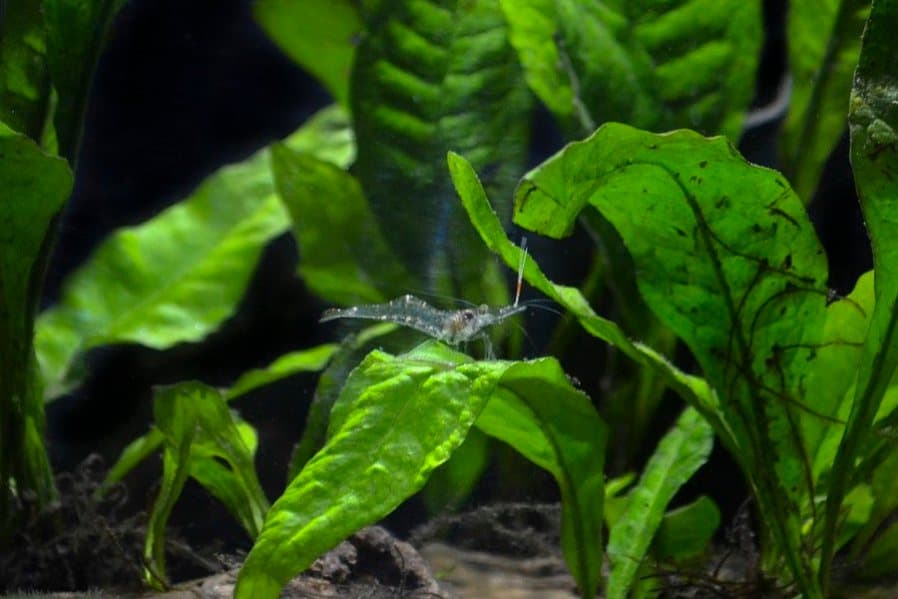Housed in a splendid 20-gallon tank, Betty, my betta fish, is an attraction in my house. Whenever friends come to visit me, they always spend time with Betty. They usually pull a chair and sit down near the tank while being mesmerized by its long decorative fins.
During Betty’s 1st birthday, my friend passed by and gave Betty a gift – Sherryl the ghost shrimp. My friend thought Sherryl would be a great addition to the tank and would become a life companion to Betty.
When my friend left, I prepared Sherryl for his new home. But 5 minutes after I introduced Sherryl to Betty, their supposed partnership turned into a predator-prey relationship.
The day after, my friend called and asked: How’s Sherryl doing?
Stammering to reason out, I replied: Betty’s doing fine.
My friends and fellow aquarist, what went wrong?
Join me in this article as we dive deep into the similarities and differences between ghost shrimps and betta fish to guide us in answering the ultimate question: can they co-exist?
Biological Different Species

Ghost shrimps (Palaemonetes paludosus) and betta fish (Betta splendens) are two totally different species. Based on their backbone structure, ghost shrimps are invertebrates, while betta fish are vertebrates.
Instead of a backbone, ghost shrimps have a hard exoskeleton that makes up their shell. On the other hand, betta fish have 34 vertebrae that make up their backbone structure.
Fun Fact: Did you know that the shape of a betta fish spine can indicate disease?
If the spine of your betta fish is curved, it means it is suffering from a disease. It is either their internal organs are swelling or the spine is infected.
Now that we have established the total biological difference between ghost shrimps and betta fish, let’s see how they thrive in the wild.
Moderately Similar in Natural Habitat
Originally before breeding and domestication, ghost shrimps and betta fish come from 2 different regions. Ghost shrimps came from North America, while Asia is the home turf of betta fish.
While these 2 species came from the opposite side of the globe, their habitat is similar to some degree.
Ghost shrimps live in swamps and marshes with heavy vegetation, while betta fish favors floodplains, rice paddies and canals. Although both of them thrive in freshwater, ghost shrimps can tolerate the presence of salt and this is the reason why they are also found in brackishwater environments.
When it comes to feeding, although both species naturally feed on insects, ghost shrimps are omnivore. Aside from dead insects that settle at the bottom, they also feast on algae and leaf litter.
Identical Parameters for Domestication

It is obvious that while there are similarities between ghost shrimps and betta fish, the differences cannot be discounted. However, the single most important factor for these species to coexist in a single tank is their thriving parameters. And surprisingly, they are identical or in range of their tolerance.
Water temperature
Naturally, the temperature range for ghost shrimps runs from 18 – 27 OC (65 – 80 OF) and 24 – 27 OC (75 – 80OF) for betta fish. Meeting halfway and for the 2 species to coexist, aquarists maintain the temperature range from 21 – 27 OC (70 – 80OF).
pH
When it comes to the acidity or alkalinity of the water, both species favor and flourish in a 7 to 8 pH level. This means that they both love neutral to slightly alkaline waters.
Water Flow Rate
Ghost shrimps and betta fish like good water flow. Just mild and not strong enough that they become stressed out. Avoid using devices that produce strong water flow, like powerheads and wavemakers.
Organic matter
Especially for ammonia, nitrates and nitrites, both species are less tolerant to high levels of organic matter. In the event that these compounds spike, your ghost shrimp may die and/or your betta fish will weaken and get sick.
Opposite Behavior
What can you expect if you mix a hostile fish and a friendly shrimp in a single tank? You just facilitated a predator-prey relationship.
In all aspects, Betta fish will dominate over ghost shrimps.
Betta fish are aggressive and this is the reason why they are isolated from other species, even from their own kind. On the other hand, ghost shrimps are peaceful.
When it comes to body size, betta fish are larger. This antagonistic fish measures 5 to 8 cm in length while ghost shrimps can only grow up to 5 cm.
The bottom line question is: do betta fish eat ghost shrimp?
Yes. On top of their dominant behavior and size, betta fish are carnivorous. Ghost shrimps are an easy meal for betta fish and this is the reason why they are also called as feeder shrimps.
So, is this the end of coexistence for betta fish and ghost shrimps?
No. In fact, many aquarists have successfully grown the 2 species in a single tank. But growing them both is not a matter of coincidence or luck. Measures and techniques have been established to convert the supposedly predator-prey relationship into a mutual coexistence.
Ways to Prevent Ghost Shrimp Predation
Here are some techniques that have been successful in the simultaneous breeding of ghost shrimp and betta fish.
Provision of A Large Tank
The bigger the tank, the better. Avoid using fish bowls. The limited space agitates the betta fish as the ghost shrimp is thriving within the territory it claims. Aggression of betta fish in a bowl is hastened.
Use at least a 5-gallon tank. This creates enough space for both species to freely swim, roam around and provide an escape room for the ghost shrimp in case the betta fish attacks.
Decors as Hiding Places
The more exposed the ghost fish, the more betta fish lock on them as food targets. Adding decors (like live plants, rocks or driftwoods) provides hiding places for ghost shrimps and lessens its predation.
Fun fact: If they do not feel threatened, ghost shrimps will come out of their hiding places and explore your tank.
Ghost Shrimp Goes in First
In most cases, the betta fish are already in the tank before we stock the ghost shrimp. The moment you add the ghost shrimp, they will treat it as a threat and may become aggressive.
Ghost shrimps should go in first before the betta fish.
In cases that you already have the betta fish in your tank, just take the fish out and redecorate. Afterward, place the ghost shrimp. Let it leave for a couple of minutes before you stock the betta fish. In this way, your betta fish will treat it like it is a new environment.
Stocking Density
For every tank, there should only be 1 betta fish. However, the quantity of ghost shrimp may vary according to tank size.
The general rule is that there should only be a maximum of 4 ghost shrimps per gallon of water. Adding more will trigger their population to grow exponentially.
We have to remember that ghost shrimps are reproductively prolific species. They easily multiply, especially if parameters are conducive.
Furthermore, the larger quantity of ghost shrimp in the aquarium will trigger a feeding frenzy for the betta fish. So, instead of peaceful cohabitation, the large number of ghost shrimps will just hasten the feeding dominance of betta fish.
Feed Type, Technique and Frequency
Betta fish and ghost shrimp require different food requirements.
Protein and fiber rich feeds are highly recommended for betta fish.
While betta fish food comes in 2 forms, choose the floater feeds. In this way, your betta fish will stay at the surface and away from the bottom where your ghost shrimp is located. In case you choose the sinker type, betta fish will scour the bed and may accidentally eat ghost shrimp.
For ghost shrimp, they favor algae wafers. They may also like insects, brine shrimp and mosquito larvae.
Regardless of feed type, what is important to us is who’s going to eat first. Ghost shrimp should eat first. In this way, they will not starve, swim to the surface and compete with the betta fish food where the chances of them being eaten is high.
When it comes to feeding frequency, daily feeding is recommended for betta fish, while ghost shrimps are fed every other day. In this way, the daily feed leftovers of betta fish will become food for the ghost shrimp.
In case there’s no betta food leftover, ghost shrimps can feed on algae or the overgrowths of your live aquatic plants.
Make no mistake in making ghost shrimps as an algae-deterrent species. Yes, they eat algae but not in large quantities.
Signs of an Attack

Sooner or later, your betta fish will attack your ghost shrimp. The degree of damage may vary, but it will definitely happen in the future. It is inevitable.
Swimming in circles
Just like in sharks, swimming in circles means that the fish is highly agitated, excited, and about to attack.
In between circular swimming, your betta fish may nip on your ghost fish before devouring it alive. Take note that the chances of your betta fish getting choked is possible. This is highly possible if the size difference between the 2 species is minimal.
History of Attack
If your betta fish has a history of attacking other fish, then most likely it will attack and eat your ghost shrimp. A historical attack is a good indicator and that should be a no-brainer for you.
Similarly, you can use this historical background to your advantage especially if you are still looking for a new betta fish.
Never choose betta fish that has been grown in cups. They’re most likely to be aggressive. Choose betta fish that have lived in tanks with ghost shrimps. In this way, you are guaranteed that the betta fish that you are about to purchase is already familiar with the appearance and presence of a ghost shrimp.
If you see these signs, do you think you have time to prevent it?
Perhaps, it may be too late for you as the munching of ghost shrimp into the betta fish mouth happens in a fraction of a second.
Summary of the Similarities and Differences between a Ghost Shrimp and Betta Fish
| Ghost Shrimp | Betta Fish | |
| Scientific name | Palaemonetes paludosus | Betta splendens |
| Backbone structure | Invertebrate | Vertebrate |
| Natural Distribution | North America | Asia |
| Habitat | Fresh – Brackishwater | Freshwater |
| Diet | Omnivore | Carnivore |
| Water Temperature | 18 – 27 OC(65 – 80 OF) | 24 – 27 OC(75 – 80 OF) |
| pH | 7 – 8 | 7 – 8 |
| Water Flow Rate | Mild | Mild |
| Organic Matter | Low | Low |
| Behavior | Peaceful | Aggressive |
| Maximum Body Size | 5cm | 8cm |
| Stocking Density | 4 shrimps / gallon | 1 fish / tank |
| Feed Requirement | Protein and fiber enriched feed | Algae wafer |
Related:
- Can Betta Fish Live Together?
- Can Betta Fish Live with Goldfish?
- Can Guppies Live With Bettas?
- How Many Cherry Shrimp Per Gallon?
- What Do Aquarium Shrimp Eat?
- Types of Aquarium Shrimp
Conclusion
It is without a doubt that ghost shrimp can live with betta fish. However, it is also without a doubt that your ghost shrimp may be eaten by the betta fish.
In case this happens, like what happened to Sherryl, don’t blame yourself. It is the natural behavior of betta fish. Furthermore, some tanks are set-up in such a way that ghost shrimps are intended to really become a part of betta fish diet.
At the end of the day, it is a matter of setting your objectives. If your objective is to feed your betta fish with ghost shrimps, then allow the natural relationship of a predator and prey to occur.
If not, then prepare to implement all the preventive measures and spend a lot of time looking for pre-attack signals, which in most cases, is not worth it.
